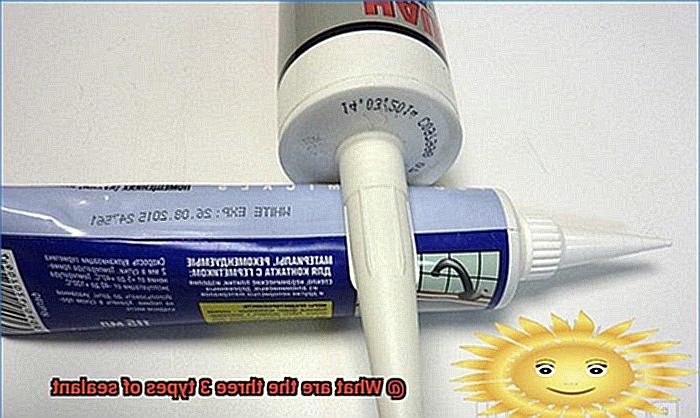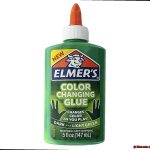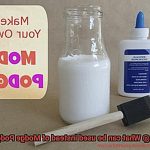Looking for a reliable way to protect your belongings from water damage? Or maybe you’re a DIY fanatic who wants to take their projects to the next level? Either way, sealants are the answer to your prayers. They offer unparalleled protection against leaks, moisture, and even air escape.
But with so many types of sealants available, it can be hard to know which one is right for you. Fear not. We’re here to help by breaking down the three most popular types: silicone, polyurethane, and acrylic.
Silicone sealants are perfect for wet or damp areas because they’re incredibly flexible and offer excellent water resistance. Polyurethane sealants, on the other hand, are more rigid and durable – ideal for applications that require strength and longevity. And then there’s acrylic sealant – known for its easy application and paintable finish; it’s a popular choice among DIYers.
We’ll take an in-depth look at each type of sealant in this post. You’ll learn about their unique features, strengths, and best uses. So whether you’re looking to protect your home or enhance your latest project, keep reading to discover everything you need to know about these three types of sealants.
What is a Sealant?
Contents
A sealant is a versatile material that is primarily used to close gaps or joints to prevent the passage of air, water, dust, or other substances. This simple yet effective solution plays a vital role in ensuring that buildings are energy-efficient, weather-resistant, and structurally sound.
There are four main types of sealants: silicone, polyurethane, acrylic, and rubber. Each type has unique properties that make it suitable for various applications.
Silicone sealants are incredibly popular due to their flexibility and adhesive properties. They are widely used for sealing windows, doors, and other exterior surfaces because they can endure extreme temperatures and weather conditions. Their resistance to water and mold also makes them an ideal choice for bathrooms and kitchens. Additionally, they come in a range of colors, making them a popular option for aesthetic purposes.
Polyurethane sealants are known for their strength and durability. They are often used in construction projects for sealing joints and gaps in concrete, metal, and wood. They can also withstand vibrations and movements, making them suitable for automotive applications.
Acrylic sealants are water-based materials that are easy to apply and quick-drying. They are often used for interior applications such as sealing gaps around baseboards or window frames. Moreover, they can be painted over once dry.
Rubber sealants are made from natural or synthetic rubber and commonly used for sealing automotive parts or industrial equipment.
Choosing the appropriate sealant is crucial to achieve the desired result as it will depend on factors such as flexibility, adhesion strength, and resistance to weather or chemicals. It is essential to understand the differences between each type of sealant before selecting one for your project.
Different Types of Sealants
Sealants are a vital type of adhesive material that can be used to create a tight seal between two surfaces. To make the right choice for your project, it is important to know the different types of sealants that are available in the market. Here are three main types of sealants and their unique features:
Silicone Sealant
Silicone sealant is a popular choice because of its flexibility and resistance to extreme temperatures and weather conditions. It can be used on a variety of surfaces, including glass, metal, and plastic. It is commonly used for sealing windows, doors, and bathroom fixtures. Its ability to resist water and mold makes it ideal for use in damp areas.
Polyurethane Sealant
Polyurethane sealant is known for its strength and durability. It is highly resistant to chemicals, weathering, and abrasion. It can be used on a variety of surfaces, including concrete, wood, metal, and plastics. It is commonly used for sealing roofs, floors, and joints. Its ability to withstand vibrations and movements makes it an excellent choice for automotive applications.
Acrylic Sealant
Acrylic sealant is a water-based type of sealant that dries quickly and can be painted over once it has cured. It is known for its flexibility and ability to withstand temperature changes and UV rays. It can be used on a variety of surfaces, including wood, metal, and plastic. It is commonly used for sealing gaps around windows and doors.
Choosing the right type of sealant depends on the specific application and materials being sealed. Factors such as temperature range, flexibility, strength, durability, and environmental impact should all be taken into account.
Silicone sealants are widely used in construction and industrial applications because they have excellent resistance to heat, cold, moisture, and chemicals. They are also flexible and have good adhesive properties.
Polyurethane sealants are commonly used in automotive applications, such as bonding windshields, roofs, and body panels. They are also used in construction for sealing concrete joints, expansion joints, and gaps between building materials.
Acrylic sealants are water-based and have low VOC content, making them an environmentally friendly option. They are easy to apply and can be painted over once they dry. They are commonly used for sealing cracks and gaps in walls and ceilings, as well as for filling gaps around doors and windows.
Silicone Sealants
Silicone sealants are a popular choice for construction and home improvement projects due to their flexibility, durability, and resistance to extreme temperatures. They are made from a silicone-based polymer that is mixed with various additives to enhance their properties.
There are three main types of silicone sealants: neutral cure, acid cure, and high-temperature. Let’s dive deeper into each of them.
Neutral cure silicone sealants are the most commonly used type and are known for their excellent adhesion to a wide range of surfaces, including glass, metal, and plastic. They are also resistant to UV radiation and weathering, making them ideal for outdoor use. Neutral cure silicone sealants are perfect for general-purpose applications.
Acid cure silicone sealants, on the other hand, are more commonly used in industrial settings where a high level of adhesion is required. They have a fast curing time and can be used in environments with high humidity or moisture levels. Acid cure silicone sealants are better suited for industrial settings.
Finally, high-temperature silicone sealants are specifically designed to withstand extreme temperatures up to 600°F (315°C). They are commonly used in automotive and aerospace applications where heat resistance is crucial.
When choosing a silicone sealant for your project, it’s important to consider its specific needs. Here are some factors to keep in mind:
- Adhesion: What surfaces will you be bonding? Make sure the sealant you choose has good adhesion properties for those materials.
- Cure time: How quickly do you need the sealant to cure? Neutral cure silicone sealants typically have longer curing times than acid cure sealants.
- Temperature resistance: Will your project be exposed to extreme temperatures? If so, choose a high-temperature silicone sealant.
- Environment: Will your project be exposed to moisture or UV radiation? Consider a sealant with appropriate resistance properties.
Advantages of Silicone Sealants

Silicone sealants are the superheroes of construction and home improvement projects, offering numerous advantages that make them stand out from other types of sealants. Let’s explore some of these benefits in more detail.
Flexibility is one of the most significant advantages of silicone sealants. They are highly flexible and can withstand a wide range of temperatures without cracking or breaking. This makes them perfect for environments that experience extreme temperature variations, ensuring that your project remains secure and intact.
Another great advantage of silicone sealants is their resistance to UV radiation and weathering. Whether you’re working on an outdoor project or one that experiences frequent exposure to sunlight, silicone sealants can maintain their integrity and durability, even when exposed to harsh outdoor conditions.
Silicone sealants are also known for their excellent adhesive properties, allowing them to bond well with a wide variety of surfaces such as glass, metal, wood, and plastic. This makes them ideal for sealing gaps and joints in different materials. Whether you need to seal windows, doors, sinks, or other fixtures, silicone sealants won’t disappoint.
In addition to their adhesive properties, silicone sealants offer excellent waterproofing capabilities. They form a tight seal that prevents water from penetrating through the surface, making them ideal for use in wet environments. So if you’re looking for a reliable waterproofing solution that won’t let you down, silicone sealants are the way to go.
Finally, silicone sealants are highly resistant to chemicals such as acids, bases, and solvents. This makes them perfect for use in industrial applications where exposure to chemicals is common. With silicone sealants, you won’t have to worry about your project being affected by chemical exposure.
Polyurethane Sealants
These adhesives are popular in the construction, automotive, and aerospace industries due to their incredible bonding properties and resistance to environmental factors.
Polyurethane sealants are made up of polyurethane polymers and offer excellent adhesion to various surfaces such as metal, wood, concrete, and plastic. They can also withstand extreme temperatures and harsh environmental conditions, making them perfect for outdoor use.
But that’s not all – polyurethane sealants come in different types with specific properties and characteristics. One-component polyurethane sealants are ready to use and do not require any preparation. These sealants cure by reacting with moisture in the air, creating a strong bond that resists water, chemicals, and UV radiation.
Two-component polyurethane sealants require mixing before application but offer faster cure time and higher strength than one-component sealants. These are commonly used in industrial settings where high-performance bonding is required.
Finally, hybrid polyurethane sealants combine the properties of polyurethane with other materials such as silicone or acrylic. These sealants offer excellent adhesion and flexibility while maintaining resistance to weathering and aging.
So what are the benefits of using polyurethane sealants? Firstly, they offer incredible durability and strength that can last for years. Secondly, they have many applications due to their excellent adhesion to various surfaces. Finally, they can withstand extreme temperatures and harsh environmental conditions, making them ideal for outdoor use.
Advantages of Polyurethane Sealants
When it comes to sealants, polyurethane is the superhero of the bunch. With a wide range of benefits, it’s no wonder that builders and homeowners alike choose polyurethane sealants for their construction and DIY projects.
First off, polyurethane sealants excel in adhesion. They can bond to almost any surface including wood, metal, concrete, and plastic. This makes them an ideal choice for sealing gaps and joints in buildings or automotive applications.
Moreover, polyurethane sealants are incredibly durable. They’re resistant to weathering, UV radiation, and chemicals. This means they won’t break down over time, making them perfect for outdoor use such as sealing roofs or windows.
But wait, there’s more. Polyurethane sealants are also highly flexible. They can expand and contract with temperature changes without cracking or breaking. This makes them the go-to choice for sealing joints in buildings and other structures.
And last but not least, these super sealants offer unbeatable resistance to water and moisture. Whether you need to seal up your bathroom or kitchen against water damage, polyurethane sealants have got you covered.
Acrylic Sealants
Made from a mixture of water, acrylic resin, and other performance-enhancing additives, acrylic sealants offer numerous advantages over other types of sealants.
Perhaps the most notable benefit of acrylic sealants is their water-based formula. This means they are non-toxic and easy to clean up, making them an eco-friendly option for those who are conscious about the environment.
But that’s not all. Acrylic sealants also offer exceptional flexibility that allows them to expand and contract with temperature changes without cracking or breaking. This makes them perfect for sealing gaps and joints in walls, windows, doors, and other areas where movement is expected. With acrylic sealants, you can rest assured that gaps won’t form due to expansion or contraction.
Another major advantage of acrylic sealants is their resistance to UV rays. Unlike other sealants that may yellow or degrade when exposed to sunlight, acrylic sealants maintain their integrity and appearance even after prolonged exposure to the sun. This makes them an ideal choice for outdoor applications like sealing around windows, doors, and roof vents.
When it comes to application, acrylic sealants are incredibly easy to work with. You can use a caulking gun or apply them by hand with a putty knife. Plus, they can be painted over once they have cured, giving you even more versatility in your project.
Acrylic sealants come in different formulations depending on their intended use. Some are designed for interior use, while others are meant for exterior applications. They also vary in terms of their curing time, which can range from a few hours to several days.
Advantages of Acrylic Sealants
If you’re searching for a sealant that is versatile, durable, safe, and budget-friendly, then acrylic sealants are the way to go. As an expert on this topic, I can confidently say that acrylic sealants offer numerous advantages that make them an ideal choice for sealing and bonding different surfaces.
Firstly, acrylic sealants are incredibly versatile. You can use them on various surfaces such as metal, wood, concrete, brick, and even glass. This means you won’t have to worry about purchasing different sealants for different surfaces. What’s more, they have excellent adhesion properties which ensure a strong bond with most materials.
Another significant advantage of acrylic sealants is their durability. They can withstand exposure to sunlight, water, and temperature changes without cracking or shrinking. This makes them perfect for outdoor applications such as sealing windows and doors. Additionally, they are ideal for use in bathrooms and kitchens where moisture is present.
Acrylic sealants emit minimal VOCs which make them safe to use indoors. They also have a very low odor which adds to their safety benefits. Moreover, they come in a range of colors which makes them incredibly versatile in terms of design options. You can even paint over them once they have dried to match your color scheme.
Lastly, acrylic sealants are budget-friendly compared to other types of sealants. This makes them a popular choice for both residential and commercial applications.
j_I0bhZ6jrc” >
Conclusion
In conclusion, sealants are a vital tool for both DIY enthusiasts and professionals alike. They provide unparalleled protection against leaks, moisture, and air escape, making them an essential material for any project. However, with so many types of sealants on the market, it can be challenging to select the right one.
Fortunately, understanding the differences between each type of sealant is crucial in choosing the appropriate one. For instance, silicone sealants are perfect for wet or damp areas due to their flexibility and excellent water resistance. On the other hand, polyurethane sealants are more rigid and durable, making them ideal for applications that require strength and longevity. Meanwhile, acrylic sealant is known for its easy application and paintable finish, making it a popular choice among DIYers.
Each type of sealant has unique features that make them suitable for different projects. Silicone, polyurethane, and acrylic sealants offer numerous advantages that make them go-to choices in various industries. It’s essential to consider factors such as flexibility, adhesion strength, temperature range, durability, and environmental impact before selecting a sealant.
Whether you’re looking to protect your home or enhance your latest project’s aesthetics or performance – silicone sealants’ flexibility and adhesive properties make them an excellent choice. Polyurethane sealants’ strength and durability make them perfect for industrial settings or outdoor use where extreme temperatures are expected. Lastly, acrylic sealants’ versatility makes them ideal for sealing gaps in walls or filling gaps around doors and windows while being eco-friendly at the same time.
In summary: selecting the right type of sealant will depend on specific needs such as adhesion properties required by surfaces being bonded or sealed; cure time needed; temperature resistance required; environment exposure such as moisture or UV radiation; among other factors. Therefore it’s critical to consider these factors when choosing a suitable type of sealant that will meet your project’s requirements perfectly.






